2017 Hall of Fame Inductees
Dr. Rudolf G. Buser
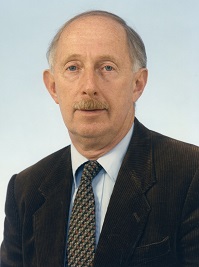
Dr. Rudolf G. Buser provided 38 years of dedicated civil service, and served as Director of the U.S. Army Communications-Electronics Research Development and Engineering Center’s Night Vision and Electronic Sensors Directorate then a part of CECOM, from 1988 until his retirement in 1996. Under his direction, new methodologies were introduced for the insertion of state-of-the-art technology into fielded systems, such as the introduction of Second Generation Forward Looking Infrared Horizontal Technology Integration. This concept, postulated by Dr. Buser, offered significant improvements in warfighting capabilities across the force structure. It enabled platforms to see the same battlefield, while helping to maintain the integrity of existing configurations, and commonality – all while incurring low cost logistical and maintenance support. This novel approach, later pursued by the Army for Aviation Platform Application, resulted in a life cycle cost savings then estimated at $820 million. He was a champion of integrating government and industry teams to conduct research and development, in order to develop critical sensor technology while maximizing limited resources. His pioneering efforts in laser technology have been documented, and helped both the military and commercial sector realize the significance of such technology. Through Dr. Buser’s tireless determination, vision, and efforts, the U.S. Army and DOD catapulted from symmetric warfare limited to daylight hours to an asymmetric battlefield where the United States military and our allies were able to carry out missions under the cover of darkness and ultimately, “Own the Night.” Dr. Buser passed away in February 2007 Click here for interview video.
Dr. Raymond L. Filler
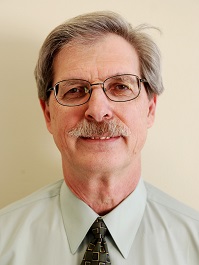
Dr. Raymond L. Filler served 36 years, first with the U.S. Army Research Laboratory and then with the U.S. Army Communications-Electronics Research, Development and Engineering Center until his retirement in 2011. Dr. Filler’s efforts in research, experimental and modeling studies on navigation systems and technology, to include Global Positioning Systems (GPS) and integrated GPS; and on low-powered high-precision clocks in support of GPS technology programs, have been recognized world-wide. Some of his most significant work related to the High Shock Crystal Resonator project, in developing a precisions quartz crystal resonator capable of maintaining a tight frequency tolerance after being fired from a 155mm Howitzer. This work was the basis for both a patent awarded in 1981 and a 1979 Army Research, Development and Achievement award. As an engineer and scientist, Dr. Filler authored or co-authored over sixty-two publications and/or formal presentations. There are 594 known citations of Dr. Filler’s work, citing 36 of his publications, as evidence that his contributions have been enduring. He has eight patents related to quartz crystal resonators, thereby successfully converting his scientific research into usable military technology developments and equipment. Throughout his personal and professional background, Dr. Filler has exemplified leadership, service, dedication to duty, and contributions to the mission of U.S. Army Materiel Command and U. S. Army Communications-Electronics Command. Click here for interview video.
Mr. Robert F. Giordano
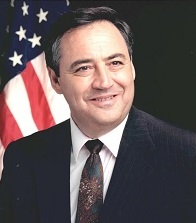
Mr. Robert F. Giordano served as the Technical Director of the U.S. Army Communications-Electronics Research, Development and Engineering Center, which was then part of the U.S. Army Communications-Electronics Command, from 1993 until 1997. Mr. Giordano’s responsibilities include direct oversight of three major business units of the Command, including the Research and Development Center, the Software Engineering Center and the Information Systems Engineering Command. Mr. Giordano’s technical expertise and management acumen leading a complex, diverse, high technology global organization engaged in the development, acquisition, engineering, fielding, and sustainment of state-of-the-art command, control, communications, computer, intelligence, surveillance and reconnaissance systems and equipment for Army, Joint Service and Coalition users is evidenced throughout many programs having compiled a record of significant firsts which greatly influenced joint warfighters capabilities. During the course of his time as a member of the Senior Executive Service, Mr. Giordano’s expertise was acknowledged with many awards. His 33 years as a Department of Army Civilian included important work on projects focusing in areas such as electronic warfare and command and control systems, eventually culminating in the Task Force XXI Advanced Warfighting Experiment. Click here for interview video.
Command Sergeant Major (Retired) Ray D. Lane
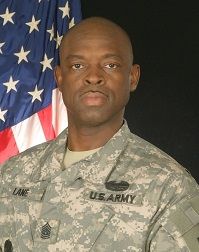
Command Sergeant Major Ray D. Lane served this nation exceptionally and with great honor and distinction for over 33 years as a United States Army Soldier and Leader. He served as the Command Sergeant Major of the U.S. Army Communications-Electronics Command (CECOM) Life Cycle Management Command and Fort Monmouth, New Jersey from January 2006 to August 2008. He was also a driving force behind the concept and eventual incorporation of Mobile Training Teams, possessing exportable training capabilities across the total Army force as well as what has become to be known today as the CECOM & Cyber Center of Excellence (CCoE) “Home on Home” conferences/visits. The “Home on Home” initiative ensures that the entire Command, Control, Communications, Computers, Intelligence, Surveillance and Reconnaissance/CCoE community provides the U.S. Armed Forces with secure communications capabilities on a global scale. Command Sergeant Major Lane worked diligently with the entire CECOM and Fort Monmouth communities as CECOM prepared to move under BRAC 2005 from Fort Monmouth to Aberdeen Proving Ground, Maryland to ensure that every member of the team experienced a seamless transition. He was inducted, posthumously, as a distinguished member of the Signal Regiment in 2010. He personified the model of a professional, who placed the needs of Soldiers, Civilians, and Families first, ensuring the fair and respectful treatment of all members of the CECOM team. Command Sergeant Major Lane passed away in March 2010. Click here for interview video.
Lieutenant General (Retired) Alfred J. Mallette
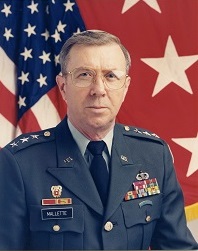
During then-Major General Mallette’s tenure as the Commanding General of the U.S. Army Communications-Electronics Command (CECOM), from 1990 until 1992, he profoundly influenced the direction of CECOM as a command with a war-time support mission. He was a driving force within the Army for the modernization of tactical communications and was a leading proponent and shaper of the program which would become known as Mobile Subscriber Equipment. During Operation Desert Shield, Major General Mallette established a 24/7 CECOM Emergency Operations Center to serve as a focal point for all actions relating to the crisis, to enable CECOM to sustain the equipment out in the field and ensure that any follow-on items arrived in theater mission-ready. His personal direction of the CECOM efforts, equipping and sustaining the forces with the communication and electronics equipment it needed to fight, ensured that the complex task was effectively organized at a tactical level. The CECOM Readiness Directorate completed 1,318 fieldings between July 1990 and February 1991, many accelerated to meet the required for Desert Shield/Desert Storm. By the end of the crisis, CECOM had processed close to 180,000 requisitions, shipped six million pieces of equipment worth over $1.1 billion, initiated 456 urgent procurement work directives valued at $113 million, and procured a total 10.8 million pieces of equipment worth $326 million. In July 1992, the Army promoted Mallette to the rank of Lieutenant General, and he then served as the Deputy Direction General of the NATO Communications and Information Systems Agency. Lieutenant General Mallette passed away in August 1993. Click here for interview video.



